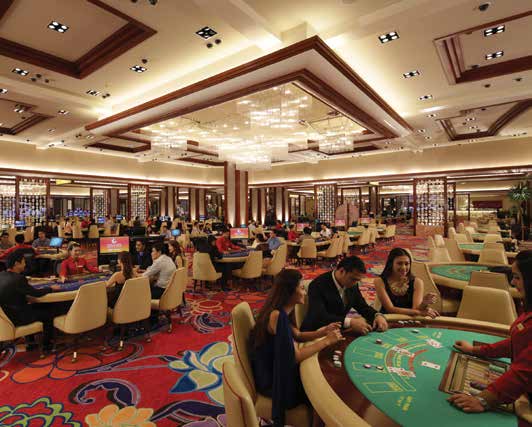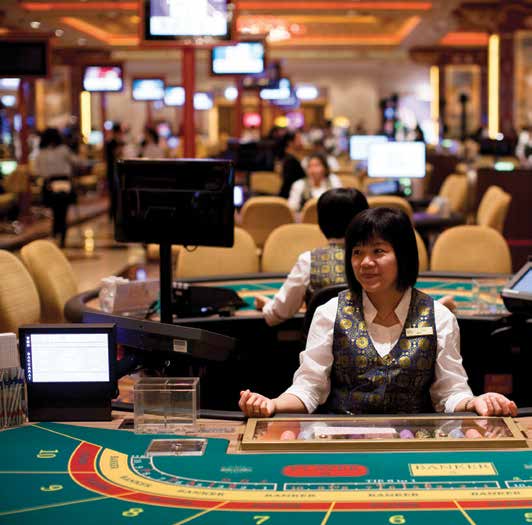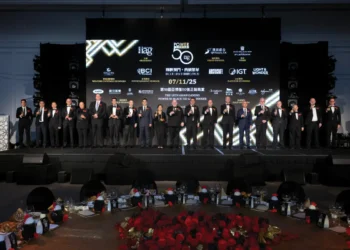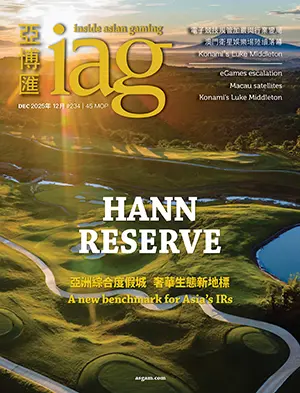An effective customer experience program requires a holistic approach that rewards the operator and employees as much as the customers themselves.
At a time when the gaming industry faces unprecedented competition the world over, customer experience (CX) alone will provide sustainable competitive differentiation. While some gaming operators have made starts toward CX enhancement, almost all tend to withdraw their commitment to CX prematurely. Consequently, despite early good intentions, companies walk away from CX initiatives failing to see their CX efforts translated into demonstrable financial outcomes.
While the term “customer experience” frequently rolls off the tongue of gaming company CEOs, their understanding of CX is seldom challenged. Press the CEOs for a definition of CX and you will more than likely get a vacuous look or superfluous platitudes in response. Clearly, it is hard if not impossible to make any headway on the CX front if leaders themselves are unsure of what CX is and what it ought to be.

CX comprises the interactions between brand and customer. These interactions occur across several platforms – the web, telephone, advertising, direct mail, e-mail, staying at the hotel or visits to the gaming facility, to name but a few. Customer experience in the gaming industry involves significant “cocreation” between the operator and the customer. Co-creation is the process by which products, services and experiences are jointly developed by the operator, its partners and the final consumer, leading to a new space where the value created is shared. The extent of value perceived by the customer during the co-creation will determine the quality of the delivered customer experience. Most organizations fail to realize that it is the customer’s perception that finally determines CX value, not Forbes Travel Guide ratings or mystery shop results.
An effective CX program must get five main ingredients right: culture, employee engagement, employee reframing, customer insights and customer journey mapping. Should you miss out on any of these ingredients, your chances of succeeding with the CX initiative will be greatly diminished.
CULTURE
Tony Hsieh, the legendary founder of Zappos, once famously said, “For individuals, character is destiny. For organizations, culture is destiny.” To craft a compelling customer experience, companies need to inculcate a customer-centric culture, with an unwavering commitment to provide targeted customers with the best possible guest experience. The first vital step in this direction is to measure the existing culture across all levels of the organization. Accurate measurement of organizational culture is necessary before any attempts are made to change it. The pervasive culture within an organization is very much a reflection of the behavior of senior management. If senior management is perceived as taking the customer for granted, it is hard to drill customer-centricity in the rank and file.
EMPLOYEE ENGAGEMENT
In the 1990s and early 2000s, an intriguing concept revolutionized the way companies thought about their most important asset – their employees. Called “employee engagement,” it was loosely defined as the “capture of discretionary effort” on the part of employees. Discretionary effort means going above and beyond at one’s job; putting in additional effort simply because one wants to do so.
While some companies in jurisdictions such as Macau try hard to retain their employees by offering regular salary increases, paternity leave and maternity leave – with regular bonuses awarded irrespective of performance – these moves accomplish little in increasing employee engagement. Often, they only increase employees’ sense of entitlement, sowing the seeds of discontent. Engagement is more a result of perceived common purpose between the employer and the employee. So long as the employer pays market-based compensation and perks and incentives are fairly distributed, money does little to promote engagement. A trusting and empathetic leadership team, one that can provide employees with clarity about the organization’s larger goal, its “why,” is essential for engendering employee engagement.

EMPLOYEE REFRAMING
Reframing involves changing the conceptual and emotional viewpoint in relation to how a job or situation is experienced. A frame is a complex schema of unquestioned beliefs, values and assumptions that we use when inferring meaning. If any part of that frame is changed, then the meaning that is inferred also changes (hence “reframing”). Organizational psychologist Siobhan McHale writes, “Reframing the role of employees can lead to higher levels of engagement, especially if connected to the difference that your company makes in the lives of others.”
The powerful impact of reframing on job performance is often ignored. Ordinarily, a person that washes dishes in one of your restaurants may not ascribe much meaning or significance to their job. However, viewing the job as “ensuring that all guests have a safe and enjoyable dining experience” has a positive impact on performance as well as the person’s self-concept. Similarly, the job of your CFO could be reframed as “managing the organization’s liquidity to ensure on-going positive employee and customer engagement, while contributing to a better economy.” When properly configured, reframing can change a routine monotonous “job” into a “calling.”
CUSTOMER INSIGHTS
To provide an experience that meets or exceeds guest expectations, customer data needs to be captured, managed, analysed and applied in a timely manner. To fully understand and appreciate customer needs, wants, desires and motivations, simple surveys on customer satisfaction or net promoter score (NPS) are not enough. Surveys and focus groups often lead to erroneous conclusions due to the unreliable memories of respondents or due to response bias.
Ideally, quantitative data generated through surveys, machine learning and text analytics should be integrated with “thick data” that provides deep and often counterintuitive insights into people’s emotions, motivations and ways of thinking. Zaltman’s Metaphor Elicitation Technique (ZMET) is one example of how thick data can uncover even the unconscious motives of customers and how the findings can be used to effectively reorganize the customer experience.
Four factors impact the efficacy of customer research: (1) Types of information collected; (2) Consolidation of data into an easy-to-analyze format; (3) Deriving usable insights from data; and (4) Timeliness of insights, including ability to use real time data in decision making.
The discipline of data-based decision making takes a lot of guesswork out of the CX equation. Former Netscape CEO Jim Barksdale summed up the situation beautifully when he sheepishly said, “If we have data, let’s look at data. If all we have are opinions, let’s go with mine.”

JOURNEY MAPPING
To truly enhance the customer experience, it is necessary to have the whole customer journey in sight. Think about how you can improve this journey. The journey mapping approach most used in service industries is “service blueprint,” a technique first described by G. Lynn Shostack of Citibank. A service blueprint identifies all key touchpoints along the customer journey, describing the physical evidence, the customer behaviors, the contact employee’s front-stage and backstage behaviors, and the support systems and staff that are instrumental at each touchpoint. Three of the six concessionaries in Macau have already harnessed the power of service blueprints to understand and improve CX, albeit with varying results.
Service blueprints provide several key benefits. They provide a common point of discussion for service improvement, thus making explicit decision makers’ and employees’ notions of what constitutes the customer experience. By providing an overview of the entire service process – both current and desired – employees get valuable insights into how their roles fit into the integrated whole. Most importantly, accurate blueprint maps alert management to areas where the customer service needs to improve, costs can be cut, revenues can be increased and profits could be maximized.
CONCLUSION
In the increasingly competitive global gaming environment, there is little space for me-too loyalty programs and little reward for the “build it and they will come” premise. Developing a truly outstanding customer experience mandates alignment across culture, employee engagement, employee reframing, customer insights, and service blueprints. Forrester data show that the revenue impact of a 10-percentage-point improvement in a company’s customer experience score can exceed US$1 billion. If this single statistic does not prompt casino operators to get serious about customer experience, nothing probably will.


































